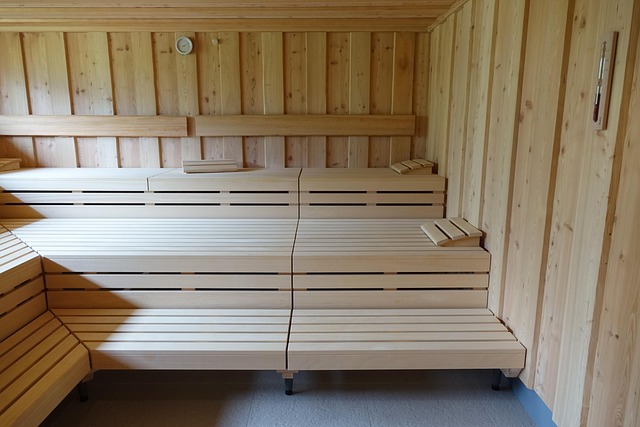Revolutionizing Skin Healing: Stem Cells as Future Advanced Wound Care

Stem cell therapy emerges as a revolutionary approach to advanced wound healing solutions, particula…….
Advanced Skin Repair Therapy: A Comprehensive Analysis
Introduction
Skin repair therapy is a multifaceted field dedicated to restoring, regenerating, and maintaining the integrity of skin tissues. With advancements in medicine, technology, and research, “Advanced Skin Repair Therapy” (A SRT) has emerged as a cutting-edge discipline that addresses a wide array of skin conditions, from minor cuts and burns to chronic wounds and dermatological diseases. This article delves into the intricacies of A SRT, its global impact, economic significance, technological advancements, regulatory landscape, challenges, real-world applications, and future prospects. Readers will gain a thorough understanding of this critical field and its transformative potential.
Understanding Advanced Skin Repair Therapy
Advanced Skin Repair Therapy encompasses a range of treatments and technologies designed to heal damaged skin more effectively than traditional methods. It integrates cellular biology, tissue engineering, stem cell technology, and personalized medicine to promote skin regeneration and repair. A SRT’s core components include growth factors, cytokines, bioactive compounds, scaffolding materials, and regenerative cells that work synergistically to enhance the body’s natural healing process.
Historically, skin repair therapy has evolved from simple wound dressings to sophisticated biotechnological interventions. The historical context of A SRT is marked by milestones such as the development of skin grafting techniques, advancements in understanding cell signaling, and the advent of gene therapy. Today, A SRT stands at the forefront of medical science, offering hope for patients with complex wound care needs.
Global Impact and Trends
The global impact of A SRT is profound, as it addresses a universal human need: the healing of wounds. Different regions face unique challenges due to variations in climate, population density, healthcare infrastructure, and disease prevalence. For instance, tropical regions may have a higher incidence of skin conditions caused by infectious agents, while industrialized areas might see more occupational injuries requiring advanced repair therapy.
Key trends shaping the trajectory of A SRT include the development of nanotechnology in wound care, the use of telemedicine for remote monitoring and treatment, and the increasing focus on personalized medicine. The global market for skin care and wound management products is experiencing rapid growth, driven by an aging population, a rise in chronic diseases, and technological innovations.
Economic Considerations
The economic aspects of A SRT are multifaceted. It contributes to healthcare systems by reducing the costs associated with long-term wound care and preventing complications. Market dynamics in this sector are influenced by regulatory approvals, technological advancements, and consumer demand for effective treatments. Investment patterns reflect a growing interest in biotechnological solutions for skin repair, with significant funding allocated to research and development.
A SRT plays a crucial role in economic systems, not only as a healthcare solution but also as an industry that generates employment and drives innovation. It is a sector where investment can lead to substantial returns, particularly when new treatments prove effective and gain market acceptance.
Technological Advancements
Technological advancements have significantly enhanced the capabilities of A SRT. Innovations such as tissue-engineered skin substitutes, advanced wound dressings with antimicrobial properties, and personalized regenerative medicine are transforming patient outcomes. These technologies not only accelerate healing but also reduce the risk of infection and scarring.
The future potential of these technologies includes the development of smart dressings that can monitor wound progression in real-time, the use of stem cells to create functional skin grafts, and the application of gene editing techniques like CRISPR to treat genetic skin disorders.
Policy and Regulation
The policy and regulatory framework for A SRT is complex and varies by region. Key policies and regulations include Good Manufacturing Practice (GMP) standards for production, clinical trial protocols, and post-market surveillance to ensure patient safety. These frameworks are critical in guiding the development and approval of new therapies.
Regulatory bodies such as the FDA in the United States and the EMA in Europe play pivotal roles in assessing the safety and efficacy of A SRT products. The regulatory landscape is also influenced by ethical considerations, patient advocacy groups, and evolving international standards.
Challenges and Criticisms
A SRT faces several challenges, including high costs that limit access for many patients, complex regulatory pathways, and the need for more clinical trial data to support new treatments. Criticisms often revolve around the efficacy of certain therapies, the potential for adverse reactions, and concerns about data integrity in clinical studies.
To overcome these issues, stakeholders can collaborate on multidisciplinary teams to address cost-related barriers, streamline regulatory processes through better communication and transparency, and conduct robust, well-designed clinical trials that provide clear and reliable efficacy data.
Case Studies
Several case studies exemplify the successful application of A SRT. One notable example is the use of bioengineered skin in burn victims, which has drastically improved recovery times and outcomes. Another case involves the treatment of diabetic ulcers with advanced dressings that maintain a moist wound environment, promoting natural healing processes. These success stories demonstrate the transformative potential of A SRT when applied effectively.
Future Prospects
The future of A SRT is bright, with ongoing research promising even more advanced treatments. Personalized medicine, regenerative medicine, and biotechnological innovations hold the key to overcoming many of the current limitations in wound care. As these therapies become more accessible and cost-effective, A SRT will play an increasingly important role in improving health outcomes worldwide.
In conclusion, Advanced Skin Repair Therapy represents a critical intersection of medical science, technology, and policy. Its development and application are driven by the need to heal effectively and compassionately, addressing both the immediate and long-term needs of patients. As this field continues to evolve, it holds the promise of not only repairing skin but also transforming lives.

Stem cell therapy emerges as a revolutionary approach to advanced wound healing solutions, particula…….

Collagen restoration therapy, utilizing stem cells like mesenchymal stem cells (MSCs), is a revoluti…….

Skin repair involves three stages: inflammation, proliferation, and remodeling. Modern treatments li…….

Skin elasticity is key to a youthful appearance, but aging, collagen breakdown, and environmental fa…….

Advanced Skin Repair Therapy offers personalized solutions for damaged skin caused by environmental…….

Sun damage and hyperpigmentation caused by UV radiation lead to collagen degradation and discolored…….

Advanced wound healing technologies, including stem cell therapy, platelet-rich plasma (PRP), and bi…….

Stem cell therapy offers advanced wound healing solutions for dermatological conditions by accelerat…….